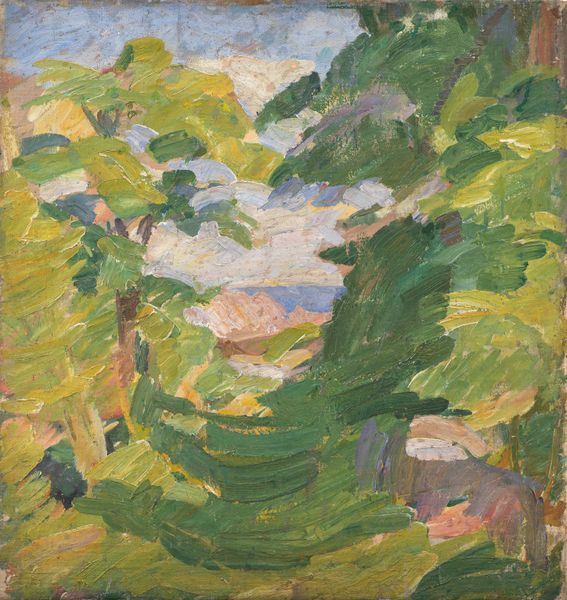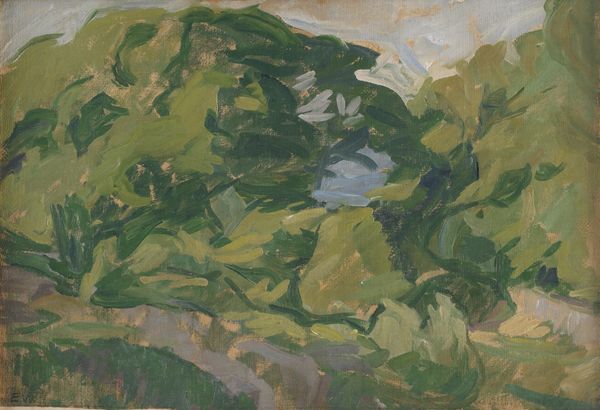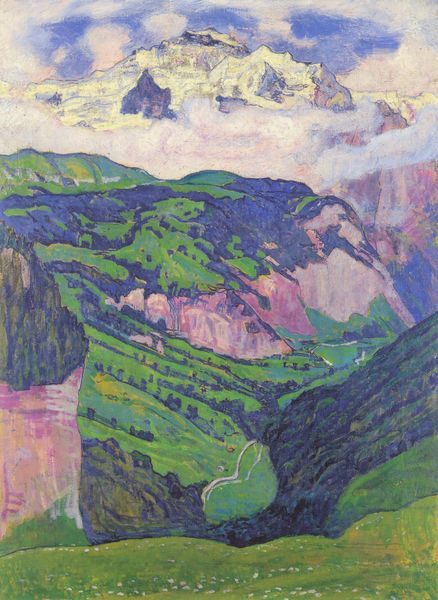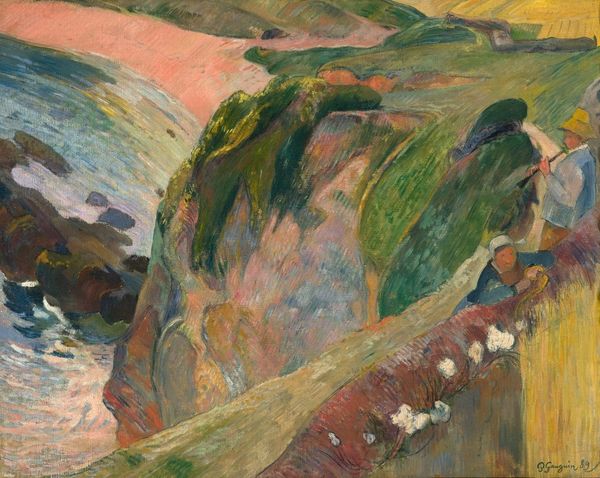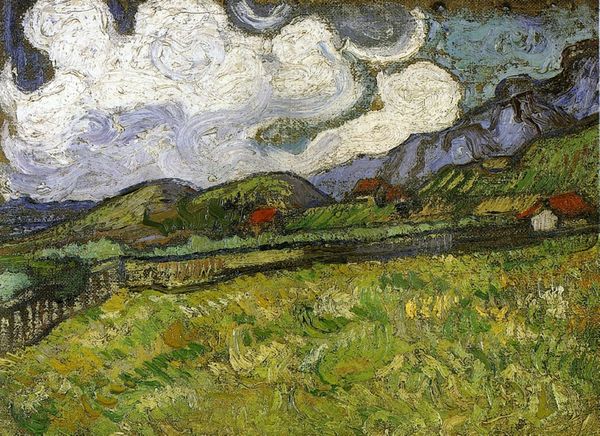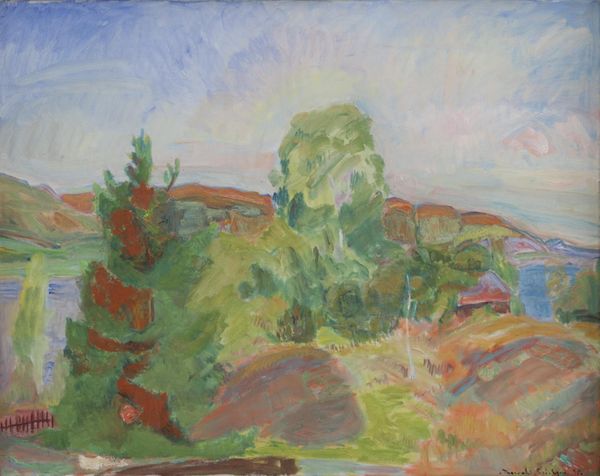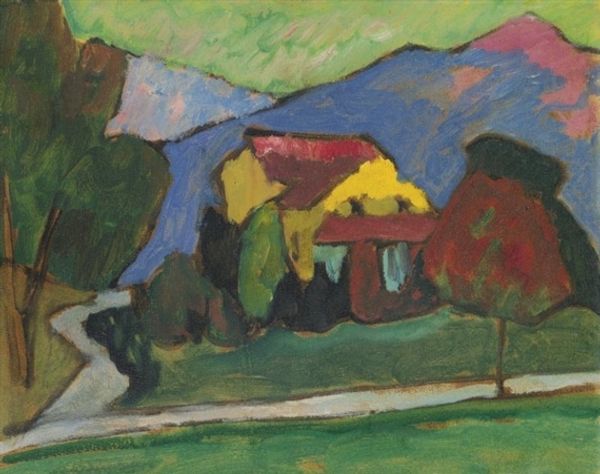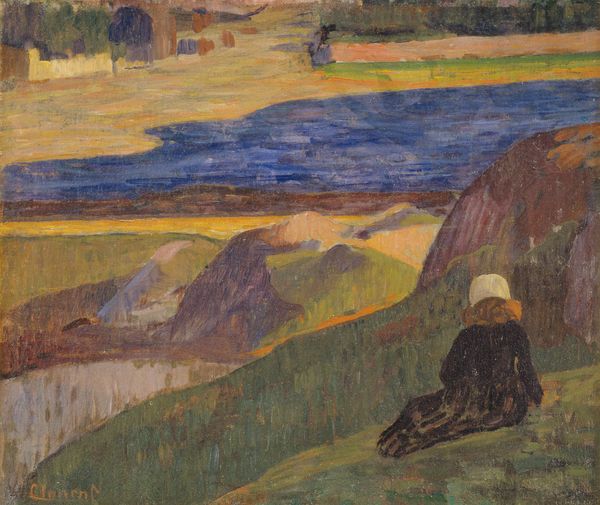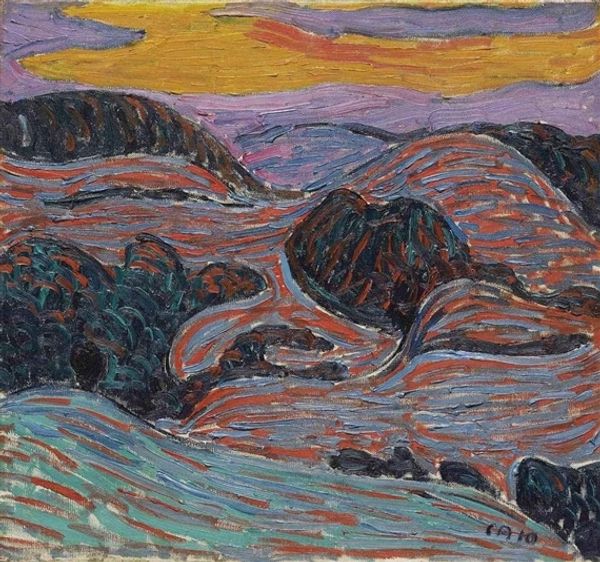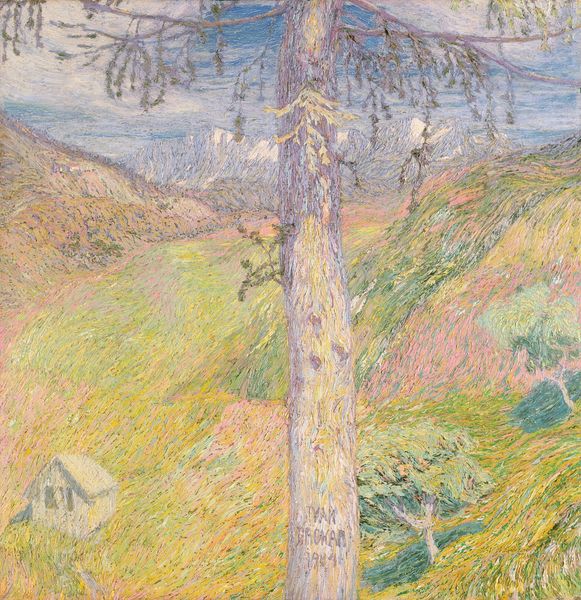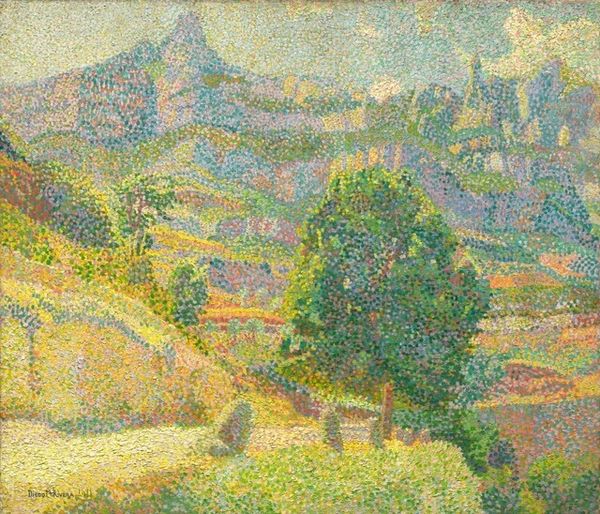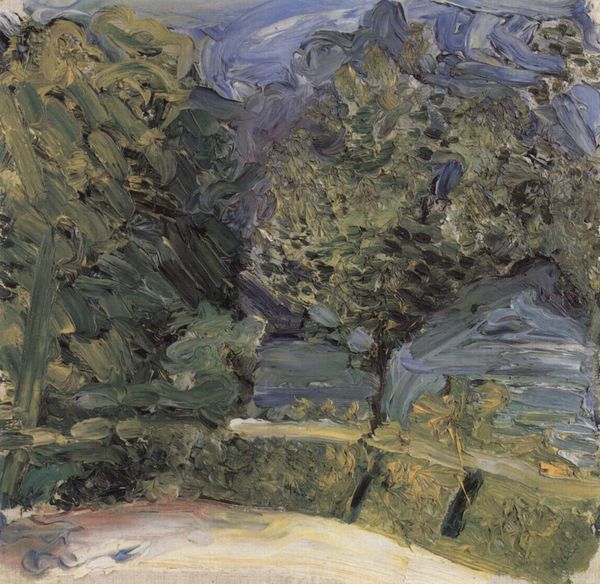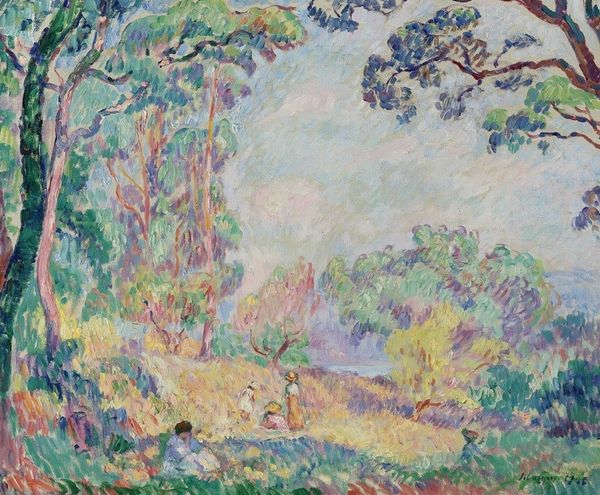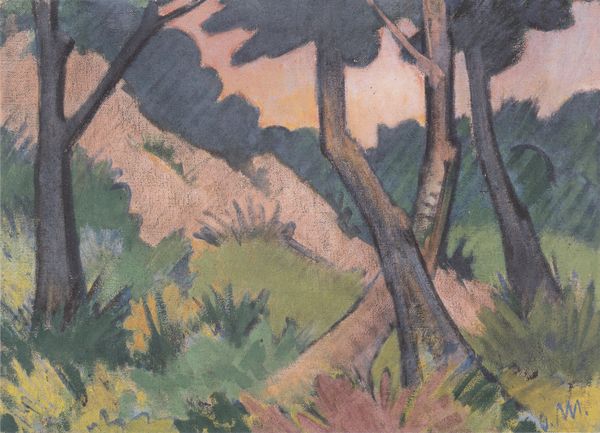
painting, oil-paint
#
water colours
#
painting
#
oil-paint
#
landscape
#
post-impressionism
#
watercolor
Copyright: Public domain
Curator: Immediately striking, isn't it? This painting is called "Landscape on Martinique" by Charles Laval. He painted it in 1887 using oil paint and watercolors. Look how the textures dance, almost singing about the Caribbean light. Editor: It certainly has an immediate allure. Yet, I can't ignore the context of its creation. Martinique was, of course, a French colony at the time. How do we reconcile appreciating the aesthetic beauty with understanding the complex history it’s embedded in? Curator: That’s precisely where things get interesting. I sense a raw honesty here, almost untouched, almost before anything bad could arrive and erase or obscure whatever beauty the earth once knew. The work speaks to my bones; do you think such sincerity is enough? Or must the historical underpinnings take priority? Editor: I appreciate your enthusiasm, but this can’t exist in a vacuum. How does this 'untouched' impression contend with the reality of colonial presence? Are we romanticizing the landscape at the expense of the local experience? Is he depicting escape at all? Is he eluding responsibility, you think? Curator: It’s possible that Laval felt conflicted himself; the vibrant yet muddied palette might suggest a subdued discomfort. Perhaps painting was a way to negotiate these complex feelings. The almost dizzying composition conveys a certain sense of…un-ease. Editor: That un-ease you feel might come from the stark division he draws. Colonial gazes framed and fragmented the landscapes of Martinique, often reducing it to resource and spectacle. What's left is an illustration of privilege. Curator: But doesn’t art often arise from such tensions? The eye sees what it sees, even when morality gets in the way. Should art always soothe and reassure? Perhaps it’s braver to show what it finds—conflict, privilege, and all. Editor: Ideally, we would ask it to do both: depict and deconstruct. Yet art can create that important disruption. By asking what is not revealed, what remains at the margin or out of sight, we get to begin that conversation and question our inherited ways of perceiving. Curator: That is why revisiting artwork from this time continues to provoke, inspire, and trouble us still today. Thanks for taking on this challenge with me! Editor: Indeed! Every viewing invites a new way to appreciate and learn.
Comments
No comments
Be the first to comment and join the conversation on the ultimate creative platform.
